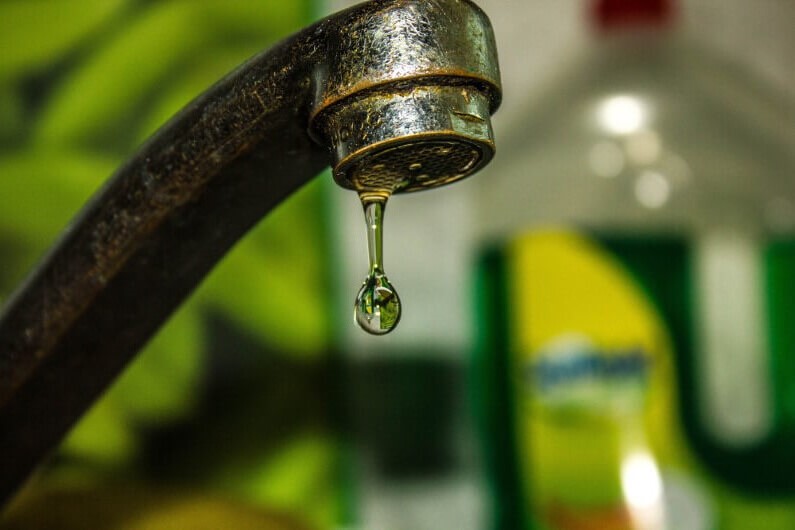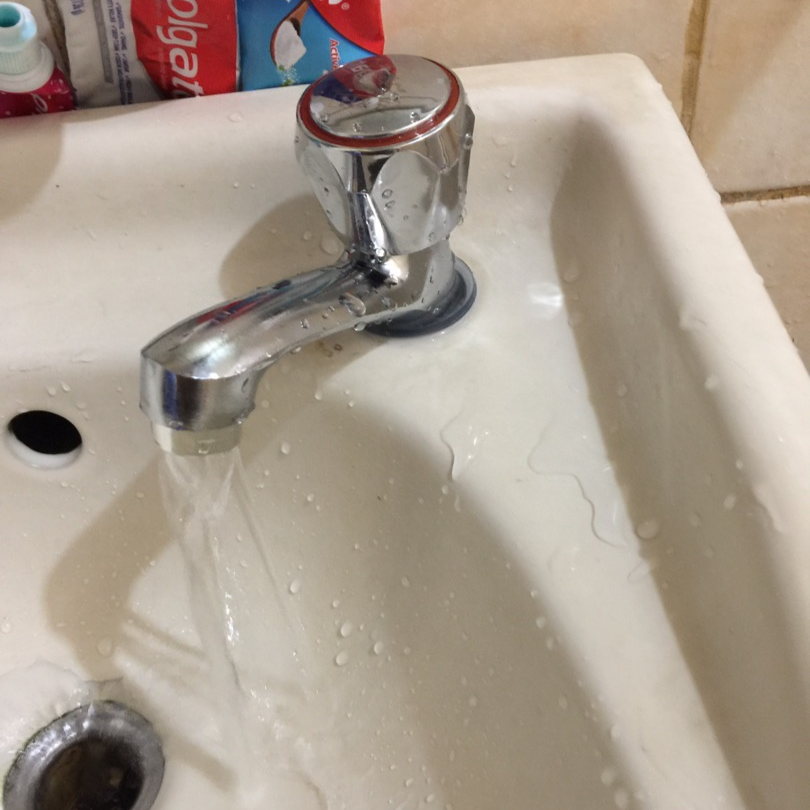What It's Mandatory to Correct a Leaking Faucet
What It's Mandatory to Correct a Leaking Faucet
Blog Article
What're your concepts about Leaky Faucets: Why They Happen & What to Do About Them?

Leaking taps could seem like a small inconvenience, but their impact surpasses simply the aggravation of the audio. From drainage to incurring unnecessary monetary costs and health threats, neglecting a leaking faucet can bring about different repercussions. In this article, we'll look into why it's important to address this common family issue without delay and efficiently.
Wastefulness of Water
Environmental Influence
Dripping taps contribute substantially to water waste. According to the Epa (EPA), a single faucet trickling at one drip per second can squander greater than 3,000 gallons of water each year. This not only strains water resources but also impacts ecological communities and wildlife dependent on them.
Financial Costs
Enhanced Water Expenses
Past the ecological effect, leaking taps can pump up water costs substantially. The accumulated wastefulness with time converts into higher utility expenditures, which can have been prevented with prompt repairs.
Potential Residential Property Damages
In addition, long term trickling can cause harm to components and surfaces bordering the tap. Water accumulation can cause discoloration, corrosion, and also structural problems if left unattended, resulting in extra repair service costs.
Health Problems
Mold and Mold Growth
The consistent presence of dampness from a dripping faucet produces an optimal setting for mold and mildew growth. These fungi not just endanger interior air top quality yet also position health and wellness threats, specifically for people with respiratory conditions or allergies.
Waterborne Diseases
Stagnant water in trickling taps can become a breeding ground for bacteria and other virus, raising the threat of waterborne illness. Pollutants such as Legionella bacteria thrive in stationary water, potentially resulting in major diseases when consumed or breathed in.
DIY vs. Specialist Repair service
Benefits and drawbacks of DIY Fixing
While some may try to repair a leaking tap themselves, DIY fixings come with their very own collection of difficulties. Without correct knowledge and devices, do it yourself efforts can aggravate the problem or lead to insufficient repairs, extending the issue.
Benefits of Hiring an Expert Plumber
Employing a professional plumber ensures that the underlying reason for the leaking faucet is dealt with effectively. Plumbings possess the knowledge and equipment to detect and fix faucet concerns efficiently, conserving time and decreasing the danger of more damage.
Step-by-Step Guide to Taking Care Of a Dripping Faucet
Tools Needed
Prior to trying to fix a leaking tap, gather the necessary tools, including an adjustable wrench, screwdrivers, substitute parts (such as washing machines or cartridges), and plumber's tape.
Typical Tap Issues and Their Solutions
Recognize the kind of tap and the particular issue triggering the drip. Typical issues include worn-out washers, corroded shutoff seats, or faulty O-rings. Describe supplier directions or online tutorials for detailed support on fixings.
Safety nets
Routine Upkeep Tips
To avoid dripping taps, do routine maintenance such as cleaning aerators, examining for leaks, and changing damaged parts without delay. In addition, consider setting up water-saving devices or updating to extra reliable fixtures.
Importance of Prompt Repairs
Dealing with dripping taps as soon as they're observed prevents additional water wastefulness and possible damages, eventually conserving both water and cash in the future.
Impact on Residential Or Commercial Property Worth
Understanding of Well-Maintained Residential Or Commercial Property
Keeping a home in good condition, including addressing upkeep issues like dripping faucets, boosts its viewed worth and desirability amongst possible purchasers or lessees.
Influence on Resale Worth
Qualities with well-maintained plumbing fixtures, including taps, command higher resale values in the real estate market. Dealing with dripping faucets can add to a favorable impression during residential property examinations and arrangements.
Environmental Duty
Private Payment to Conservation
Taking duty for taking care of trickling taps lines up with more comprehensive initiatives towards water conservation and ecological sustainability. Every person's activities jointly make a considerable impact on preserving valuable sources.
Sustainable Living Practices
By prioritizing punctual repair services and adopting water-saving routines, individuals contribute to sustainable living methods that profit both present and future generations.
Final thought
Attending to a dripping faucet goes beyond simple comfort; it's a crucial step towards conserving water, reducing monetary prices, and protecting wellness and building. Whether through do it yourself repair services or professional support, acting to deal with trickling taps is a small yet impactful way to promote responsible stewardship of resources and contribute to a healthier, more sustainable future.
Why Are My Faucets Dripping (And Can I Fix it Myself)?
Causes of a Dripping or Leaking Faucet
Whether you’re hearing drops of water falling and hitting a sink, or noticing water ooze out from the base of the spout, you shouldn’t ignore a dripping or leaking faucet. And, the good news is, sometimes you can fix the problem yourself.
In this article, we’ll review a few common causes of dripping and leaky. We’ll also walk you through some basic ways to find the problem and handle it without calling anyone — and let you know when to call in a pro.
But, no matter what the cause, or whether you can handle it on your own, the sooner you address it, the better.
Each drip may be a tiny amount of water. But, they all add up quickly. According to the U.S. Geological Survey, one faucet losing one drop every 20 seconds — five a minute — wastes around a liter of water every day, and 173 gallons a year.
Add in more than one in your house, and it’s a lot of water to waste. So, we’ll help you get to the bottom of things quickly.
Four Reasons Your Faucet May Be Dripping
Aerator is Damaged or Unseated Valve Seat is Corroded O Ring is Loose or Worn Out Part of the Assembly is Loose Aerator is Damaged or Unseated
If you unscrew the end of your faucet, you’ll find the aerator. It’s the little stem piece with a screen on it that shuts off the water circulation.
If it’s damaged, or if it’s not sitting right, it will allow water to pass through.
Valve Seat is Corroded
Next is the valve seat, which is connected to the washer. If the washer wasn’t in place correctly, then it could have ground against the seat. Over time, this damages the valve seat.
The problem could also be corrosion: Over time, the part has worn out, and it’s now allowing water to pass through.
O Ring is Loose or Worn Out
Since the o ring is only a small rubber gasket, it’s a common reason why the faucet is dripping. You’ll find it at the base of the faucet, and it’s there to keep water from coming out where it’s not supposed to.
However, it’s common for the o ring to wear out over time. When it does, you’ll notice a drip.
Part of the Assembly is Loose
So far, we’ve looked at a few small, specific parts. But, the problem could be anywhere in the assembly if something’s out of place.
Even if a part isn’t damaged, over time, it may have become loose or dislodged. It could be the parts we mentioned, or the aerator at the tip of the faucet, the stem itself,
Can I Fix a Leaky Faucet Myself?
Depending on the problem, and how handy you are, there’s a chance you can fix a leaky faucet without calling a professional. But, you do run the risk of making the problem worse.
If it’s a small drip, you can certainly try a few troubleshooting tactics. We’ll walk you through them in a moment.
But, no matter what, your first step should be shutting off the water coming into the faucet. You should find a shutoff valve under the sink on the pipes leading to it. Turn each one clockwise until they close tightly.
Next, make sure you have the right tools for whatever you’re attempting. It’s tempting to make do with what you have. But, you need the right ones for a reason: You’re often dealing with small parts that can break if you handle them carelessly.
If you’re feeling confident, here are some places to start.
Items Near the Tip of the Faucet
A few of the parts we mentioned — particularly the valve seat and washer — are located at the tip of the faucet where the water comes out. They’re easy to access, making it a good place to start.
Check the O Ring
To check the o ring, you’ll need to take off the spout at the base. It’s easiest on kitchen sinks with long spouts, versus the smaller, bulkier base on most bathroom sinks.
Either way, this can be tricky, so do it carefully and don’t force anything. If it’s not coming right off, you’re much better off calling in a pro than possibly breaking something.
For a kitchen sink, there’s usually a nut or coupling assembly at the base of the spout. These often slide off easily without using any tools.
Once you’ve disassembled those parts, gently but forcefully twist off the spout.
Then, you can see the o rings. There should be two of the rubber gaskets on the base. If they look worn or damaged, replace them, and see if that solves the problem.

We were shown that write-up on What Causes Leaky Faucets & How To Fix Them from a good friend on a different web blog. Sharing is good. Who knows, you may be doing someone a favor. Thank you so much for taking the time to read it.
Report this page